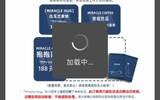A coffee utensil that is officially encouraged to "mess around"-"Philharmonic pressure"!

Life needs freshness, and so does coffee. Every day is filled with water around the hand coffee will inevitably be some "brewing fatigue", then at this time, we might as well try to play a variety of-"Philharmonic pressure".
Its idea is supposed to revolve around how to make coffee quickly and easily. I never thought that after a game held out of curiosity, it had changed from a coffee utensil to a "coffee plaything". People's pursuit of it had changed from "how does it go" to "how can it do it" now! And its inventor is also a playful old man. So, before we understand how the Philharmonic pressure is used, let's first understand the origin of the Philharmonic pressure.
The birth of Philharmonic pressure came out in 2005. It was invented by a nearly 70-year-old man, Alan Adler (Alan Adler).

His life before retirement was legendary: he was not only an electrical engineer, but also a lecturer at Stanford University and the founder of the Aerobie toy brand, with numerous inventions and patents. It was such a legend who, after retirement, was dissatisfied with the way coffee was made at that time, and in a fit of anger, he invented Philharmonic pressure!
Like most office workers, he got into the habit of drinking coffee after work, which lasted until his retirement, and even at home, he had to make his own coffee. He has tried a lot of coffee extraction utensils at home, such as capsule coffee machine, automatic drip filter, Chemex pot and so on. But these appliances are either tedious to operate or time-consuming, which makes Mr. Alan Adler very dissatisfied. As a result, with his strong hands-on ability, he had the idea of making coffee utensils: I want to make an instrument that can extract coffee quickly and easily! Then he started from 1993 to 2005, spent a full 12 years, after more than 40 generations of experimental version, the pursuit of this device is finally available-"Philharmonic pressure" (Aeropress)! It can be divided into three parts: the piston, the kettle body, and the filter cover, which is described as "syringe".
The coffee extraction principle of Philharmonic pressure includes immersion type and pressurized type. And its use is mainly divided into two kinds: positive pressure and reverse pressure! Positive pressure is the standard way of use released by the government: put the pot body of the assembled filter cover on the prepared container, add coffee powder and equal amount of hot water to stir, then insert into the piston for down pressure extraction; while the reverse pressure is to install the piston without the filter cover, then put the coffee powder and the same amount of hot water together, stir, then put on the filter cover, buckle the container, and then pour back for down pressure extraction!
Because the Philharmonic pressure is not too limited, the water temperature, time, powder quantity, grinding, powder ratio, stirring times & methods and so on are all parameters that can be adjusted at will. The change of each parameter will affect the taste of the final coffee. We can try to imagine that each change of these parameters can lead to a new extraction scheme, so how many different extraction schemes will be derived by changing them in turn? And because of this feature, Philharmonic is deeply loved by Tim Wendelboe (a very shallow leader in northern Europe) after its launch, and he would like to know who can play Philharmonic to the extreme! So in 2008, he and several Philharmonic pressure enthusiasts gathered in their local small room to hold the first Philharmonic pressure competition. There were only three contestants at that time, and the judge was Tim Wendelboe. I never thought that a few years later, the "competition" of only three people had evolved into a world-class competition today!
This is not only inseparable from the extensive inclusiveness of the Philharmonic, but also from the players who are full of fun. All right, next, let's share in front of the street, a universal cooking method of Philharmonic pressure.
The beans used in the brewing experiment are "Asaria, Kenya". The coffee made by hand has the bright acidity of black plum and small tomato and the sweetness of Sydney! Amount of powder used: 18g grinding scale: 90% screening rate of No. 20 screen (finer than conventional hand grinding) ratio of powder to water: 1:11 (about 200ml) use water temperature: 90 °C extraction method: reverse pressure
We can put two pieces of round filter paper on the filter cover in advance and then wet it with water. (if there is no circular filter paper, you can cut it with filter paper) 1. Assemble the piston and the kettle body, then press the piston to the scale ④ or so, and reverse! 2. Pour in the ground coffee powder, then add the same amount of hot water and time! 3. Use a stirring stick to stir the coffee powder in the pot for up to ten seconds. (circle slowly) 4. Install the filter cover with the filter paper on the kettle body. 5. Then buckle the prepared container. 6. Reverse it when the time is up to one minute, and then start pressing down to "press out" the coffee.
In this way, the extraction is completed and takes about 1 minute and 20 seconds. The stability of the back pressure is higher than the positive pressure, which can greatly reduce the difficulty for rookies to use ~ and its extracted Kenya tastes sour, sweet and delicious, full of juice, very good.
-END-
Front Street Cafe
No. 10 Baoqian street, Yandun road, Dongshankou, Yuexiu district, Guangzhou, Guangdong province
Important Notice :
前街咖啡 FrontStreet Coffee has moved to new addredd:
FrontStreet Coffee Address: 315,Donghua East Road,GuangZhou
Tel:020 38364473
- Prev

Do you want to grab the number for coffee?! Netizen: it's even more frightening than robbing a concert!
▲ Click to follow | Daily boutique Coffee Culture Magazine Coffee Factory Coffee Factory what will you be at 1: 00 a.m. in the cold winter month? Some people will get into bed early and brush their mobile phones, while others yawn while doing a year-end summary. At one o'clock in the morning today, such a group of people squatted in in the middle of the night in order to grab a cup of coffee.
- Next

If you want the coffee to be strong, why not extract it for a while?
In daily life, Qianjie often meets some friends who like coffee with a strong taste, and they usually ask for more shot, but one guest said, "could you help me to extract my coffee a little longer?" According to this friend's understanding, the longer the extraction time, the more
Related
- What effect does Italian American coffee with filter paper have? Will coffee taste better if it is put on filter paper at the bottom of the powder bowl?
- What is the color difference in coffee beans? What are the characteristics of honey processed coffee beans? Why are the anaerobically treated coffee beans uneven in color?
- How does novice Xiaobai quickly get started and make coffee? Newbies learn to make coffee by hand and share the specific steps and process process!
- Costa tea has a shelf life of 100 years?! Expert: Unable to verify
- It's a huge uproar! American milk addition was rejected by Manner employees?!
- Mocha pot coffee bean recommendations| How fine and how much powder should be used for grinding? What parameter ratios do I need to use to make milk with Mocha pot coffee?
- What are the characteristics of the world's top ten coffee beans treated with Costa Rica honey? How to make black honey kadura from Tarazhu Pilon Processing Plant taste good?
- How to make deep-roasted coffee? What grinding water temperature does authentic Jamaica Blue Mountain No. 1 coffee use to brew it well?
- Selected high-grade rose summer coffee flavor tasting guide Why Panama rose summer has the aroma of flowers and fruits
- What equipment does a novice Xiaobai need to buy to learn to make coffee? Filter cup electronic scale bean grinder manual flushing pot purchase guide

